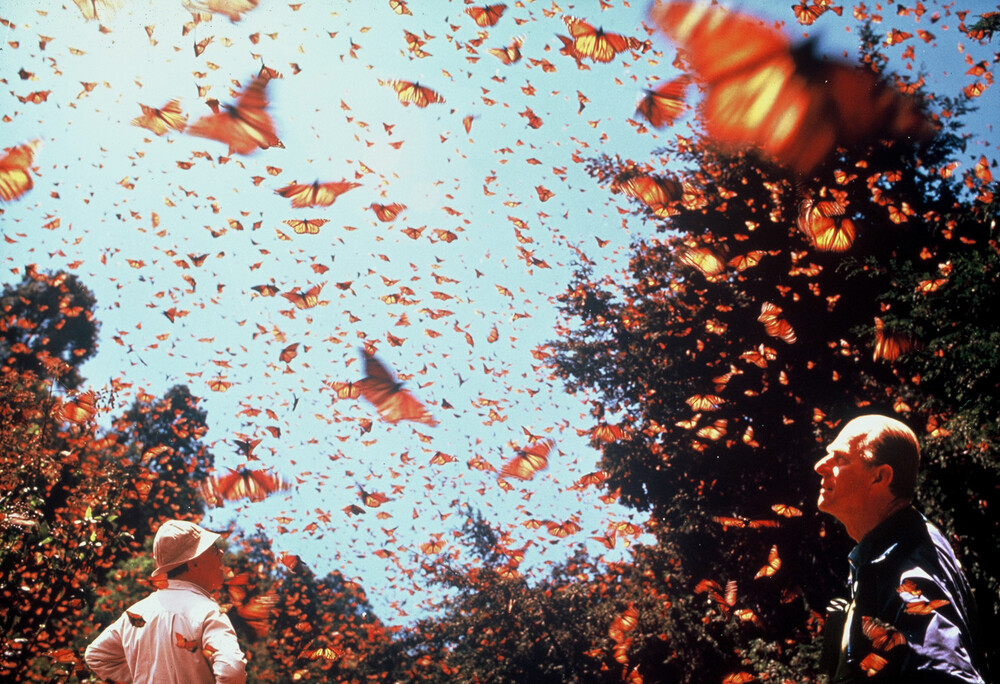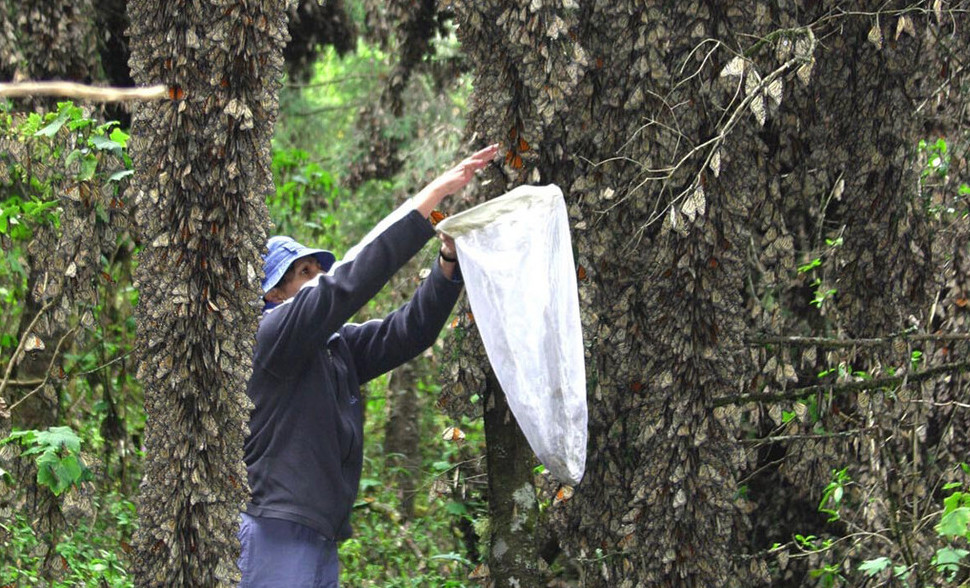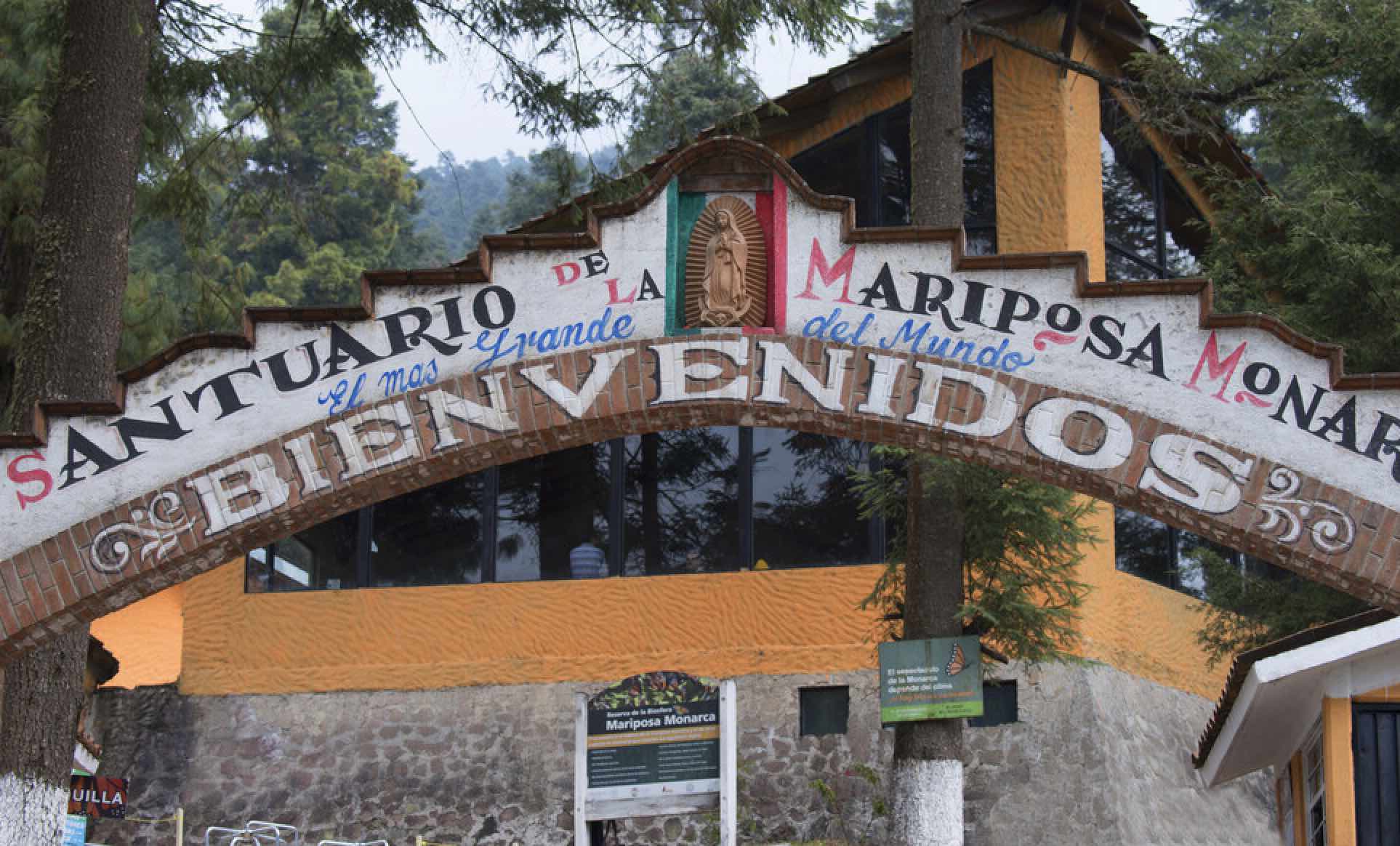The Monarch Migration in Mexico
Mexico’s Monarch Butterfly Migration: An Incredible Natural Phenomenon
Every year, millions of Monarch Butterflies travel from the United States and Canada to their wintering grounds in Mexico. The sight of these vibrant orange and black wings fluttering through the air is simply breathtaking. As you delve into the heart of the Monarch Biosphere Reserve, you’ll have the opportunity to witness their arrival and their incredible ability to navigate back to the same trees year after year.
The Incredible Journey of the Monarch Butterflies
The Monarch butterfly’s migration to Mexico is one of nature’s most remarkable feats, showcasing a journey that stretches across thousands of miles. Each year, these delicate insects embark on an epic trek from their breeding grounds in Canada and the United States to the warm, temperate forests of central Mexico. This remarkable journey is not just a random act; it’s an intricate dance of survival, instinct, and the remarkable ability to navigate vast distances. Monarchs rely on a combination of environmental cues such as temperature, daylight, and even the position of the sun to guide their way.
As the seasons change, the Monarchs begin their journey in late summer and early fall. They travel approximately 3,000 miles, a distance that could seem insurmountable for such fragile creatures. Yet, they undertake this arduous trip with a determination that is awe-inspiring. Along the way, they face numerous challenges including harsh weather conditions, predators, and the depletion of food sources. Monarchs are known to fly at altitudes of up to 12,000 feet, and their migratory route is often fraught with dangers, but their innate drive to reach their winter sanctuary propels them forward.

Arriving in Mexico, these butterflies congregate in clusters, often hanging from the same trees that their ancestors used generations ago. This incredible homing ability, combined with their communal behavior, creates a breathtaking spectacle as millions of Monarchs blanket the trees in vibrant orange and black. This stunning scene is not only a visual feast but also a powerful reminder of nature’s resilience and the interconnectedness of life. Witnessing this migration is an experience that transcends mere observation; it immerses you in the profound cycles of nature that have existed for millennia.
But it’s not just the visual spectacle that makes the Monarch migration a must-experience. This natural wonder is filled with fascinating facts and stories waiting to be uncovered. From the remarkable life cycle of these delicate insects to the conservation efforts aimed at preserving their habitat, you’ll gain a deeper appreciation for the delicate balance of nature.
Why the Monarch Migration is a Must-Experience
Experiencing the Monarch migration in Mexico is a once-in-a-lifetime opportunity, one that allows you to witness a natural phenomenon unlike any other. The sheer beauty of millions of butterflies fluttering through the air is enough to leave anyone speechless. This enchanting sight, characterized by the gentle flutter of wings against a backdrop of majestic forests, brings together people from all walks of life who share a common appreciation for nature’s wonders. The atmosphere is electric, filled with a sense of anticipation and awe as the Monarchs begin to arrive.
Moreover, the migration offers an unparalleled opportunity for education and enlightenment. Each Monarch carries a rich story that reflects the intricate web of life, the challenges of survival, and the importance of biodiversity. Visitors often leave with a deeper understanding of ecological balance and the critical role that these butterflies play in their ecosystems. Engaging with local guides and conservationists further enriches this experience, as they share insights about the Monarchs’ life cycle, migration patterns, and the environmental challenges they face.
Additionally, the Monarch migration is a reminder of the importance of conservation efforts. As you witness the beauty of these butterflies, you also become aware of the threats they face, such as habitat loss and climate change. Being part of this migration experience can ignite a passion for environmental stewardship and inspire you to advocate for the protection of not only Monarchs but also the ecosystems that sustain them. This blend of beauty, education, and advocacy makes witnessing the Monarch migration a truly transformative experience.
When is the Best Time to See the Monarch Butterflies in Mexico
Timing is crucial when planning your visit to witness the Monarch migration. The optimal window for experiencing this natural spectacle typically spans from late October through early March. During this period, the Monarchs arrive in Mexico, having completed their long and arduous journey. By late October, the butterflies begin to cluster in the Oyamel fir forests of central Mexico, reaching their peak numbers in November. This is when you can witness the most breathtaking displays as the trees become draped in flurries of orange and black.
Late November through early December marks the time when the Monarchs settle into their wintering grounds. This period offers the best opportunity to see them at rest, clustering together for warmth and protection. The sight of these butterflies hanging from the branches creates an unforgettable image, one that stays etched in your memory long after you leave. As spring approaches in March, the butterflies begin their journey northward, laying eggs and starting the next generation before their departure. Timing your visit to coincide with their arrival in late October or early November is crucial for maximizing your experience.
It’s also essential to consider the weather when planning your trip. The climate in central Mexico during the migration season can be cool, especially in the mornings and evenings. While daytime temperatures may be pleasant, packing layers is advisable to ensure comfort while you’re exploring the migration sites. Additionally, it’s wise to check local conditions and consult with guides for the best locations and times to witness the Monarchs in their full splendor.
The Monarch Butterfly Biosphere Reserve
The Monarch Butterfly Biosphere Reserve is a UNESCO World Heritage Site and serves as the primary winter habitat for the Monarchs in Mexico. Located in the mountainous regions of Michoacán and the State of Mexico, this sprawling reserve encompasses over 56,000 acres of protected forest, providing a vital sanctuary for these delicate creatures. The reserve is recognized not only for its ecological significance but also for its stunning landscapes, characterized by lush forests and breathtaking views that attract visitors from around the world.

Within this reserve, visitors have the unique opportunity to immerse themselves in the Monarchs’ winter habitat. Well-established trails lead you through the forest, offering various vantage points to witness the butterflies in their natural setting. The experience of walking among these magnificent creatures, surrounded by towering trees and the gentle sounds of nature, is both calming and exhilarating. Local guides are available to enhance your experience, sharing their knowledge about the butterflies, the unique ecosystem, and the conservation efforts underway to protect this remarkable site.
Beyond the butterflies, the Monarch Butterfly Biosphere Reserve is home to an array of flora and fauna, making it a hotspot for biodiversity. Birdwatchers and nature enthusiasts will delight in the variety of wildlife that inhabits the area. From vibrant bird species to unique plants, the reserve offers a rich tapestry of life that invites exploration and discovery. Visiting the reserve not only allows you to witness the Monarch migration but also encourages a deeper appreciation for the surrounding environment and the importance of preserving such habitats.
Tips for Visiting the Monarch Butterfly Migration in Mexico
Planning a trip to witness the Monarch migration requires some preparation to ensure that you have the best experience possible. First and foremost, consider your travel logistics. The most common entry points are Mexico City or the nearby towns of Morelia or Zitácuaro. From there, you can arrange transportation to the Monarch Butterfly Biosphere Reserve. Many local tour operators offer guided tours, which can enhance your experience by providing insights and ensuring you don’t miss the highlights of the migration.
While the migration is a spectacular sight, it’s essential to be prepared for the varying weather conditions. Layered clothing is advisable, as temperatures can fluctuate significantly throughout the day, especially in the mountainous regions. Comfortable shoes are also a must, as you’ll likely be walking on uneven terrain while exploring the reserve. Bringing along binoculars and a good camera will help you capture the stunning visuals of the Monarchs in flight or resting among the branches.
Lastly, consider the ethical implications of your visit. Engage with local communities and support businesses that prioritize sustainability and conservation. Participating in guided tours led by knowledgeable locals not only enhances your understanding but also contributes to the preservation of the Monarchs’ habitat. Being a responsible traveler means respecting the natural environment and minimizing your impact while enjoying this extraordinary experience.
Conservation Efforts and Challenges Faced by the Monarch Butterflies
Despite the breathtaking beauty of the Monarch migration, these butterflies face a myriad of challenges that threaten their survival. Habitat loss, primarily due to agricultural expansion and urban development, is one of the most significant threats. As milkweed—the sole plant on which Monarchs lay their eggs—disappears from the landscape, the butterflies struggle to find suitable breeding habitats. Conservation organizations are actively working to restore these vital habitats, but the road ahead is fraught with obstacles.
Climate change poses another significant challenge, affecting migration patterns, breeding behaviors, and food availability. Unpredictable weather events, such as droughts or extreme temperatures, can disrupt the delicate balance that Monarchs rely on for their survival. Additionally, pesticides and pollutants harm not only the Monarchs but also the ecosystems they inhabit. Awareness and education about these issues are essential to fostering a culture of conservation and encouraging local communities to participate in protective measures.
Many organizations are striving to protect Monarch habitats through various initiatives, including planting milkweed, promoting sustainable agricultural practices, and restoring natural ecosystems. Community involvement plays a crucial role in these efforts. By participating in local conservation projects or supporting eco-tourism initiatives, visitors can contribute to preserving the Monarch migration for future generations. Understanding the challenges these butterflies face emphasizes the importance of our collective responsibility to protect their habitat and ensure their survival.
Embrace the Beauty and Wonder of the Monarch Butterfly Migration
Witnessing the Monarch migration in Mexico is an experience that transcends the ordinary, offering a glimpse into one of nature’s most extraordinary events. From the breathtaking visuals of millions of butterflies taking flight to the deeper understanding of the ecological challenges they face, this journey leaves an indelible mark on all who partake in it. The combination of beauty, education, and the opportunity to engage in conservation efforts creates a well-rounded experience that resonates long after you return home.
As you prepare for your journey, remember to embrace the beauty and wonder of the Monarch migration fully. Take the time to immerse yourself in the environment, engage with local communities, and reflect on the interconnectedness of all living things. This experience is not merely about witnessing the butterflies; it’s about participating in a larger narrative that emphasizes the importance of conservation and the delicate balance of nature.
Ultimately, your journey to witness the Monarch migration is an invitation to marvel at the resilience of these delicate creatures and the ecosystems that support them. As you stand amidst the fluttering wings, allow yourself to be inspired and transformed by the experience. The Monarch migration is a reminder of the beauty that exists in nature and the responsibility we all share in preserving it for future generations.


